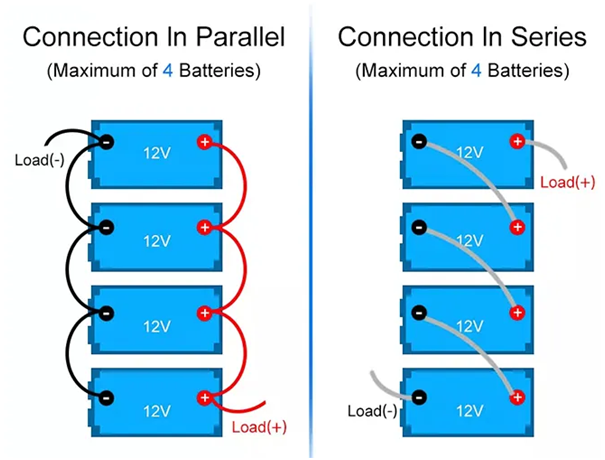HOW TO - PARALLEL WIRING FOR TYPICAL 12V HOME UPS
Wiring LiFePO4 batteries in parallel is a common way to increase the capacity of a battery bank and create a higher capacity system. By connecting multiple batteries in parallel, the total capacity of the battery bank is equal to the sum of the individual battery capacities.
For example, to create a 200Ah system, you could wire two 100Ah LiFePO4 batteries in parallel. The positive terminal of one battery is connected to the positive terminal of the other battery, and the negative terminal of one battery is connected to the negative terminal of the other battery. The remaining positive and negative terminals are connected to the load or to the system's charging source. The total capacity of the battery bank is then 200Ah.
When wiring LiFePO4 batteries in parallel, it's important to ensure that the batteries are well-matched in terms of capacity, voltage, and internal resistance. This will help to ensure that the batteries are balanced and that they will deliver consistent performance and longevity over time. A battery management system (BMS) is also typically used to monitor the individual battery voltages and ensure that they are charged and discharged safely and efficiently.
It's important to note that while wiring batteries in parallel increases the capacity of the battery bank, it does not increase the voltage. To increase the voltage, batteries must be wired in series. Additionally, when wiring batteries in parallel, it's important to ensure that the wiring is done properly and that the connections are secure, as loose or improper connections can lead to safety hazards or reduced performance.

